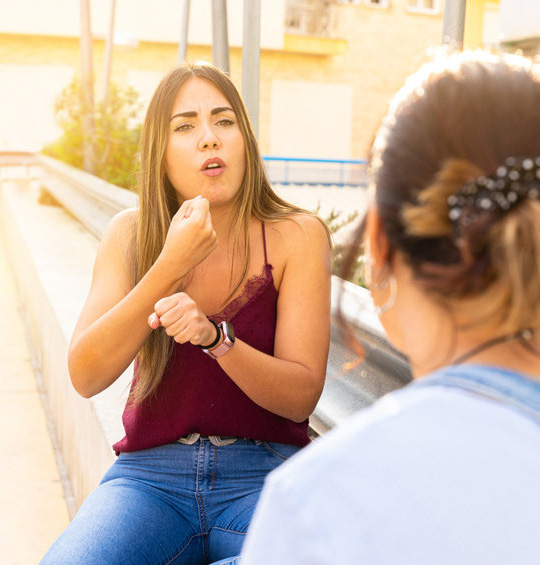CODA is the acronym used for “Children of Deaf Adults,” and it holds a special place within the deaf community. That’s right, CODA isn’t just a neat name for a movie. However, it was the movie that introduced these special people to the hearing community and got them wondering, just what does being a CODA mean? Hearing children of deaf adults turn out to be such remarkable people that many are intrigued by them.

There’s something interesting about someone who can effortlessly and comfortably navigate two worlds, and they don’t even need a cape to do so. When wondering what CODA means, the truth is it can mean many things. You may have a lot of questions about them, and you can find the answers to a lot of the questions often asked about them in this writing.
What Are Some Strengths a CODA Often Possesses?
- Great Bilingual Skills: Growing up in a household with one or both deaf parents helps a child develop fluency in sign language and spoken language that enables them to navigate both deaf and hearing cultures effortlessly. This can be great for individuals who get bored in the same setting because they can significantly change their environment when they want.
- Empathy: Their upbringing instills empathy and sensitivity toward diverse perspectives and cultures in a way that helps them become excellent advocates. They can then better educate people who lack empathy, which can benefit humanity in general.
- Cultural Preservation: Children of deaf adults play vital roles in preserving sign language and cultural traditions.
- Excellent Career Opportunities: A CODA is in a unique position that helps them become especially talented and well-suited for some occupations. Just a few examples of these occupations include interpreting, teaching, counseling, and advocacy. These are all positions where their unique skills and perspectives will be highly valued.
Are All CODAs Fluent in Sign Language?
Yes, many CODAs are fluent in sign language, and it’s often the primary form of communication they have with their deaf family. However, being fluent in sign language is not a necessity since proficiency can vary depending on each person’s experiences.
CODAs whose parents are hard of hearing, on the other hand, may not be fluent but know some sign language to communicate with them. This is because, typically, a hard-of-hearing parent can speak with their child and not use sign language.
Do Children of Deaf Adults Face Certain Challenges Growing Up?
There are advantages to growing up bilingual. However, they may have to deal with things other kids don’t. For example, it’s common for them to act as translators for their deaf parents. This can put a tremendous amount of pressure on them as they take over the translating for both parents in certain situations. There can also be additional challenges when it comes to blending their two worlds at times.
Is it Considered a Cultural Identity?
Yes, being a CODA is considered a cultural identity. They develop a unique perspective due to the experiences that they share during their upbringing, which gives them a unique cultural perspective. They get to groove to the rhythm of deaf culture, then turn around and jam with the melody of hearing culture. When blended together, this makes for a harmonious unity and, most definitely, a special and rewarding culture.
What Benefits Do They Bring to Society?
Children of deaf parents offer diverse perspectives, enhanced communication skills, and cultural awareness that give them a better understanding of the world around them. You can think of them as society’s Swiss Army Knife; they come equipped with many tools that can be used for the enrichment of others lives.
Are there Specific Challenges they Face?
The challenges CODAs face are ones only others with the same upbringing can truly understand. They navigate a world where one side is like a silent movie marathon, and the other is like a chatty debate club that never ends. The challenges they face often come from dealing with two extremes where the coping mechanisms they use in one environment don’t work in the other.
Also, they can find themselves caught in “hearing world vs. deaf world” showdowns often, where they can go from translating complex discussions to explaining meme trends. They can also find themselves caught up in explaining to other hearing parents that their deaf parents aren’t rolling their eyes to be rude, then explaining to their deaf parents that the hearing person didn’t mean to be rude by not making eye contact.
Final Thoughts
Learning more about the world of CODAs isn’t just enlightening; it can also take you on a fascinating journey through the process of navigating separate worlds simultaneously. When you understand children of deaf adults, you can gain a better appreciation for empathy, communication, and human connection. You’ll gain a better perspective on how it can take someone who lives in two worlds to give you the tools you need to best succeed in the one you live in.
Share this post with your friends using these one-click sharing options:
👉 Click here to share on Facebook.
👉 Click here to share on X.
👉 Click here to share on LinkedIn.

Get the latest interviews, tips and guides in your inbox.